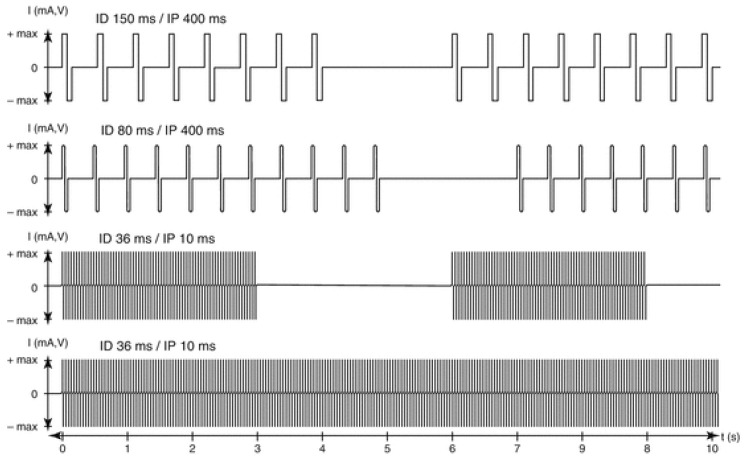Figure 2.
Parameters for progressive hbFES strategy of long-term permanently denervated human muscles. The progressive training starts, usually more than nine months after SCI, with bursts of stimulation duration (SD) of 4 s and a stimulation pause (SP) of 2 s. Notice that the burst contains impulses with an impulse duration (ID) of 150 ms and an impulse pause (IP) of 400 ms to activate severely atrophic muscle fibers, able to respond only with twitch contractions. This first period of conditioning last usually 3–5 months, but could be shortened, if the hbFES starts earlier than six months from SCI. When at successive follow-up the muscle presents higher excitability and stronger twitches, the ID can be reduced to 80 ms and SD increased to 5 s for another four months. When in the following follow-up test stimulation shows that the muscle respond to ID of about 40 ms, the next training phase implement tetanic burst stimulation of 3 s SD and 3 s SP with impulses of 40 ms ID and 10 ms IP (20 Hz frequency). The induced tetanic contractions are potent trophic factors that increase muscle mass, density and diameter of muscle fiber and then force, inducing in sitting position leg extensions without and then with additional weights on the ankles of the patients (progressive resistance training). When a good muscle condition is achieved, which depends not only to the training intensity but also to the time span of denervation, standing, stepping-in-place, and walking exercises can be performed using continuous stimulation (controlled by an external switch) with 40 ms ID and 10 ms IP.

